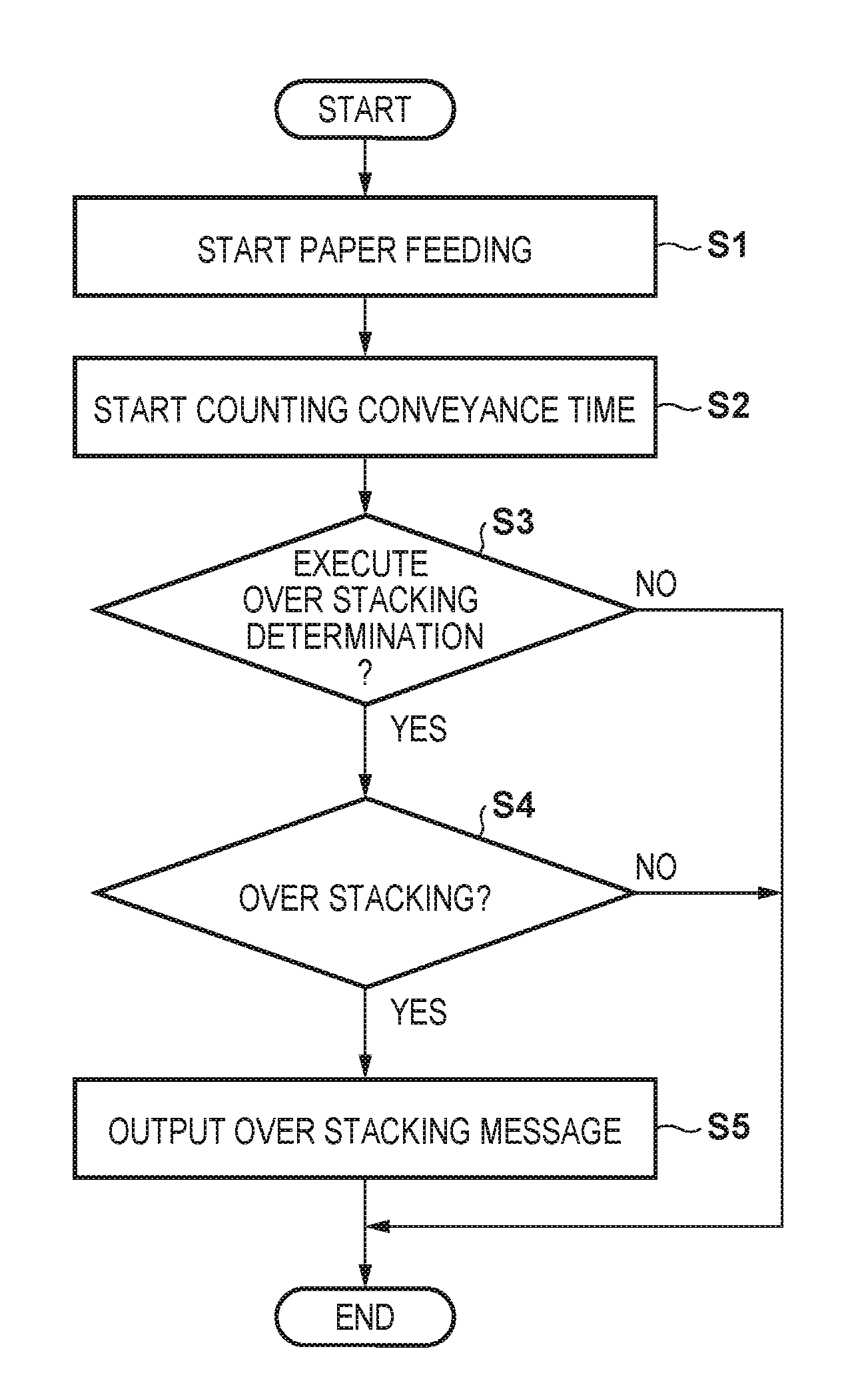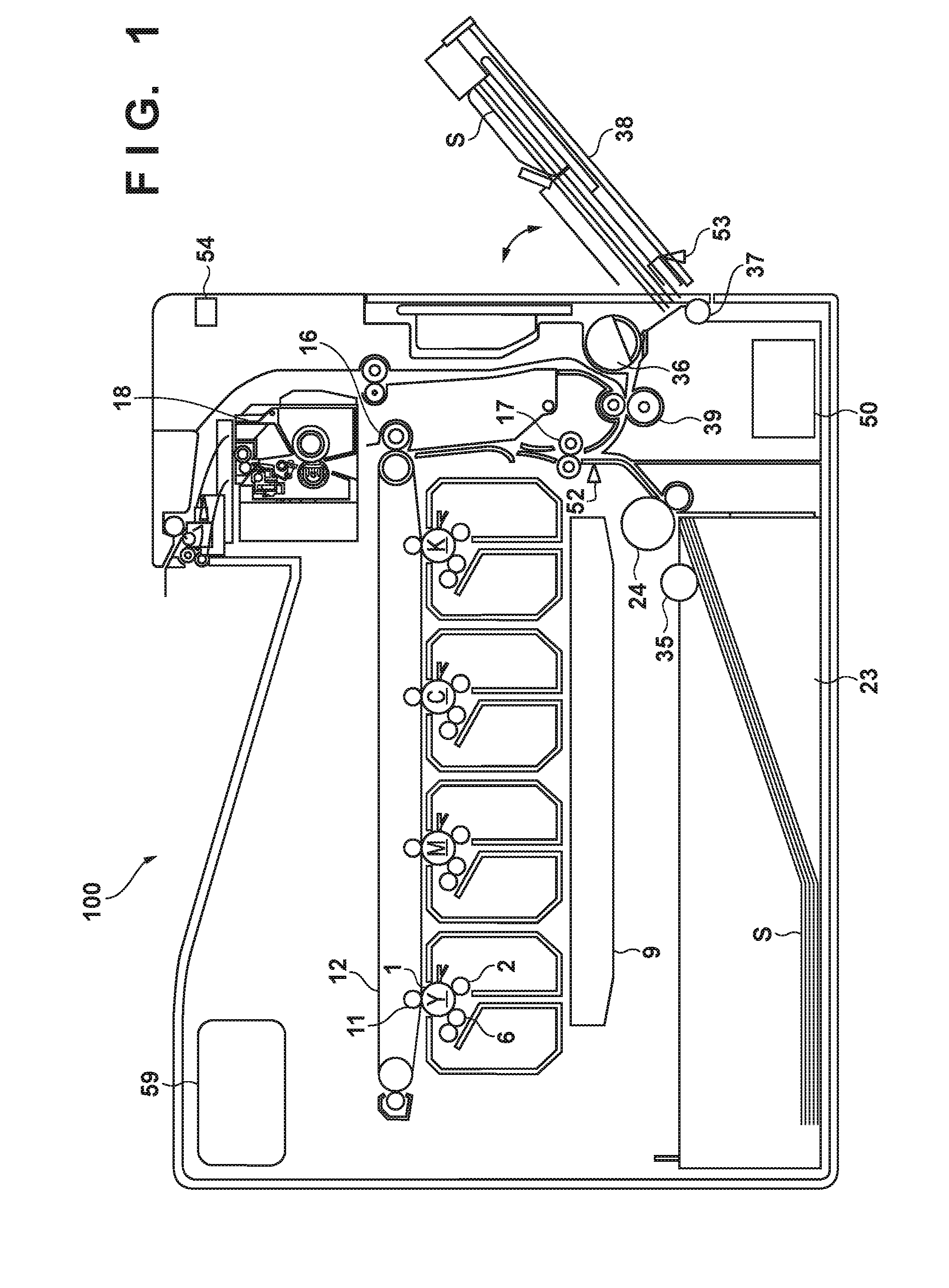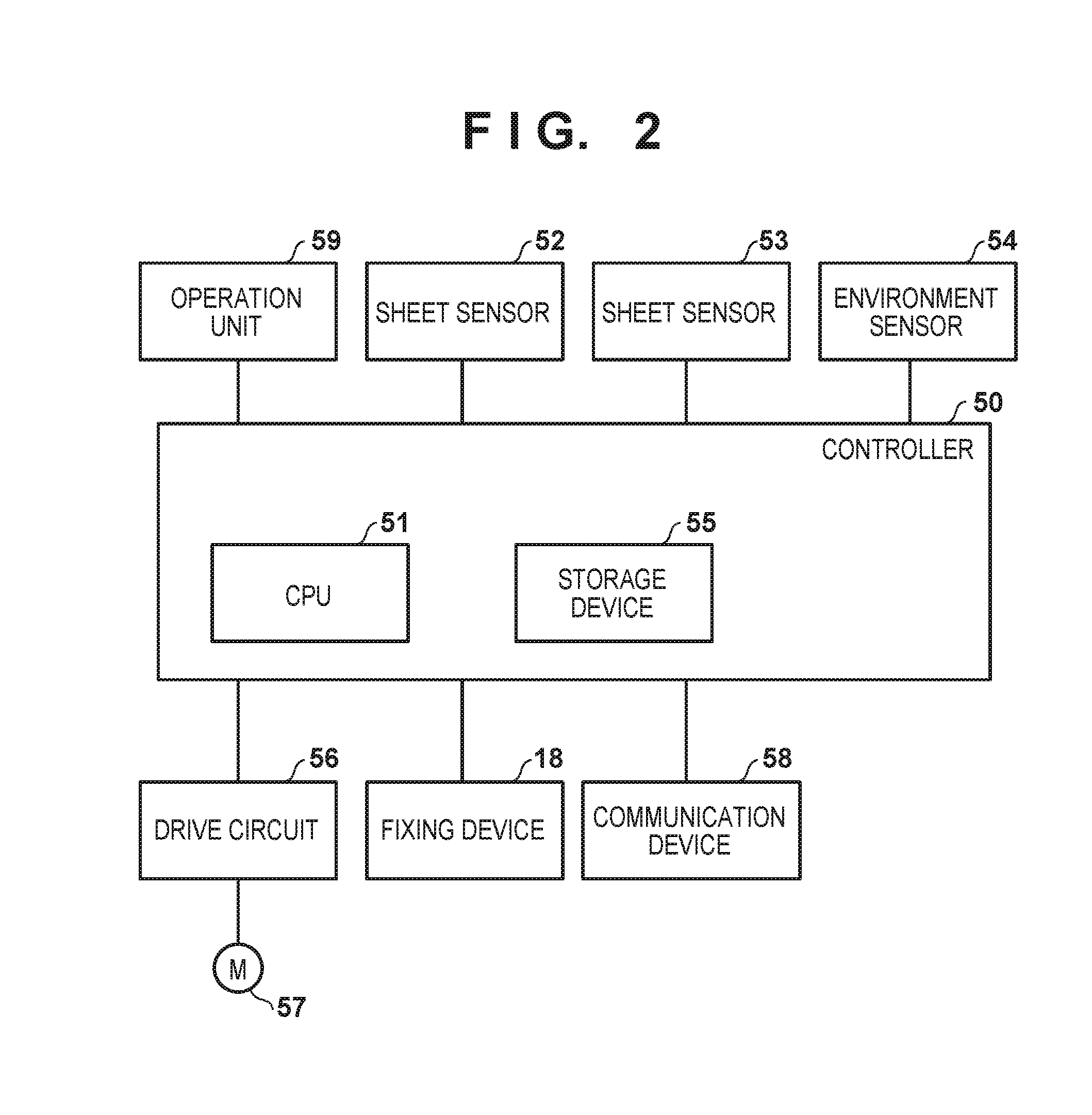Image forming apparatus for forming image on sheet
- Summary
- Abstract
- Description
- Claims
- Application Information
AI Technical Summary
Benefits of technology
Problems solved by technology
Method used
Image
Examples
embodiment 1
Configuration of Image Forming Apparatus
[0047]An image forming apparatus 100 will be described using FIG. 1. Although the image forming apparatus 100 according to this embodiment is an electrophotographic printer, an image forming apparatus to which the present invention is applicable may employ other image forming methods, such as an inkjet method and a thermal transfer method. The image forming apparatus 100 has four image forming units (stations), and forms toner images of yellow (Y), magenta (M), cyan (C), and black (K). In FIG. 1, referenced signs Y, M, C, and K, which are associated with the respective colors, are assigned to the four image forming units. A photosensitive drum 1 is a photosensitive member and an image carrier, and rotates clockwise at a predetermined circumferential speed (process speed). A charging roller 2 uniformly charges the surface of the photosensitive drum 1. An optical scanning device 9 outputs a light beam in accordance with an image signal. The surf...
embodiment 2
[0112]In Embodiment 1, the conveyance time T of each sheet is counted with the first feeding operation as a reference. That is to say, the conveyance time T is not reset even if a retry occurs. In Embodiment 2, the conveyance time T is reset to 0 if a retry occurs. This means that the conveyance time T is recounted from the timing at which the second feeding operation is started.
[0113]Another exemplary procedure for determining over stacking will be described in detail. Note that descriptions of items that are common to already-described items will be omitted. As described above, there are cases where, in the first feeding operation, a sheet S does not reach the flag 46 by the time the jam threshold value Tj elapses, due to a conveyance delay caused by the slipping or the rollers. However, there are cases where a sheet S reaches the flag 46 by executing the second feeding operation (retry). As shown in FIG. 18, there are cases where the leading end of the envelope E reaches the vici...
embodiment 3
[0117]According to Embodiments 1 and 2, if the conveyance time T deviates from the tolerance X, the CPU 51 determines that over stacking has occurred. However, if the resistance forces Fa and Fb generated by over stacking become too large, even the first sheet S cannot be fed. The counting of the conveyance time T can also be designed to be completed only after the leading end of a sheet S has reached the flag 46. In this case, in a state where not even a single sheet S can be fed, the conveyance time T cannot be counted, and the CPU 51 cannot determine over stacking. In this embodiment, the following over stacking determination method is introduced.
[0118][Over Stacking Determination Method]
[0119]An over stacking determination method according to Embodiment 3 will be described using a flowchart in FIG. 20. Compared with FIG. 16, in FIG. 20, steps S10 and S11 are inserted between steps S2 and S3.
[0120]In step S10, the CPU 51 determines whether or not a jam has occurred. For example, ...
PUM
 Login to View More
Login to View More Abstract
Description
Claims
Application Information
 Login to View More
Login to View More - R&D
- Intellectual Property
- Life Sciences
- Materials
- Tech Scout
- Unparalleled Data Quality
- Higher Quality Content
- 60% Fewer Hallucinations
Browse by: Latest US Patents, China's latest patents, Technical Efficacy Thesaurus, Application Domain, Technology Topic, Popular Technical Reports.
© 2025 PatSnap. All rights reserved.Legal|Privacy policy|Modern Slavery Act Transparency Statement|Sitemap|About US| Contact US: help@patsnap.com



